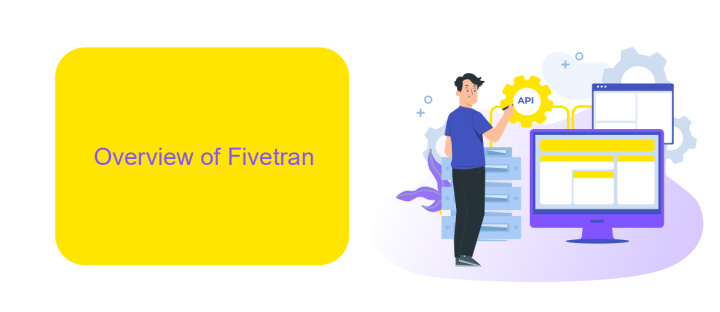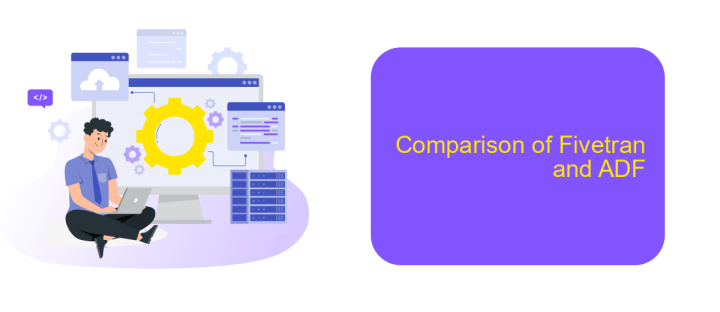Fivetran Vs Adf
In today's data-driven world, efficient data integration is crucial for business success. Fivetran and Azure Data Factory (ADF) are two leading solutions that offer robust data pipeline capabilities. This article compares Fivetran and ADF, examining their features, ease of use, pricing, and performance to help you make an informed decision on which tool best suits your organization's data integration needs.
Introduction
In today's data-driven world, businesses need efficient tools to manage and integrate their data pipelines. Two popular solutions in this space are Fivetran and Azure Data Factory (ADF). Both platforms offer unique features and capabilities that cater to different integration needs. Understanding the differences between them can help organizations make informed decisions on which tool best suits their requirements.
- Fivetran: Known for its ease of use and automated data connectors.
- Azure Data Factory (ADF): Offers extensive customization and integration with other Azure services.
- ApiX-Drive: A versatile service that simplifies the setup of integrations across various platforms.
Choosing between Fivetran and ADF involves considering factors such as ease of use, customization capabilities, and integration options. Additionally, services like ApiX-Drive can further streamline the integration process, providing businesses with flexible and efficient solutions to manage their data workflows. By evaluating these tools, organizations can enhance their data management strategies and drive better business outcomes.
Overview of Fivetran

Fivetran is a cloud-based data integration service that automates the process of connecting various data sources to a central data warehouse. It is designed to simplify the data integration process by offering pre-built connectors for a wide range of data sources, including databases, applications, and cloud services. With Fivetran, users can set up data pipelines in a matter of minutes without the need for extensive coding or manual intervention, ensuring that data is continuously synced and up-to-date.
One of the key advantages of Fivetran is its ability to handle schema changes automatically, which means that any alterations in the source data structure are seamlessly reflected in the destination warehouse. This feature reduces the maintenance burden on data teams and ensures data consistency. Additionally, Fivetran provides robust security measures and compliance certifications, making it a reliable choice for enterprises. For those looking for additional flexibility in managing their integrations, services like ApiX-Drive can complement Fivetran by offering customizable integration options and further enhancing the overall data management strategy.
Overview of Azure Data Factory (ADF)

Azure Data Factory (ADF) is a cloud-based data integration service that allows you to create data-driven workflows for orchestrating and automating data movement and data transformation. It enables you to construct complex ETL (Extract, Transform, Load) processes and manage them through a user-friendly interface. ADF supports a wide range of data sources and destinations, making it a versatile tool for handling diverse data integration needs.
- Data Ingestion: Seamlessly integrate data from various sources such as on-premises databases, cloud storage, and SaaS applications.
- Data Transformation: Utilize data flows to transform data using mapping, joins, aggregations, and other transformations.
- Orchestration: Schedule and manage complex workflows, ensuring data is processed and moved efficiently.
- Monitoring and Management: Track the progress of your data pipelines, troubleshoot issues, and optimize performance with built-in monitoring tools.
ADF also supports integration with third-party services like ApiX-Drive, which can further streamline the process of connecting various data sources and automating workflows. By leveraging these capabilities, businesses can ensure their data is always up-to-date and accessible for analysis and decision-making.
Comparison of Fivetran and ADF

When comparing Fivetran and Azure Data Factory (ADF), it's essential to understand their core functionalities and use cases. Both platforms are designed to facilitate data integration but cater to different needs and scenarios.
Fivetran is known for its ease of use and automated data pipelines. It requires minimal setup and maintenance, making it ideal for businesses that need quick and reliable data integration without extensive manual intervention. On the other hand, ADF offers a more flexible and comprehensive solution, suitable for complex data workflows and enterprise-level integrations.
- Ease of Use: Fivetran excels with a user-friendly interface and automated processes, while ADF requires more technical expertise.
- Flexibility: ADF provides extensive customization options, whereas Fivetran focuses on simplicity and speed.
- Integration Capabilities: Both platforms support a wide range of data sources, but ADF's integration capabilities are more extensive.
- Maintenance: Fivetran minimizes the need for manual upkeep, whereas ADF may require ongoing management and configuration.
For businesses looking for a middle ground, services like ApiX-Drive can be considered. ApiX-Drive offers an intuitive interface for setting up integrations, making it a viable alternative for those who need a balance between ease of use and customization.
Conclusion
In conclusion, both Fivetran and Azure Data Factory (ADF) offer robust solutions for data integration and ETL processes, each with its own set of strengths. Fivetran excels in ease of use and quick deployment, making it an ideal choice for businesses looking for a streamlined, automated data pipeline solution. On the other hand, ADF provides extensive customization options and seamless integration with other Azure services, making it suitable for enterprises with complex data workflows and specific requirements.
When choosing between Fivetran and ADF, it is essential to consider your organization's specific needs, technical expertise, and existing infrastructure. Additionally, services like ApiX-Drive can further simplify the integration process by providing user-friendly tools for connecting various applications and automating data transfers. Ultimately, the best choice will depend on the unique demands of your data strategy and the level of flexibility and control you require.
FAQ
What are the main differences between Fivetran and Azure Data Factory (ADF)?
Which tool is better for real-time data integration?
How do Fivetran and ADF handle data source connectivity?
Can I use both Fivetran and ADF together in my data pipeline?
Are there any alternatives to Fivetran and ADF for data integration and automation?
Time is the most valuable resource for business today. Almost half of it is wasted on routine tasks. Your employees are constantly forced to perform monotonous tasks that are difficult to classify as important and specialized. You can leave everything as it is by hiring additional employees, or you can automate most of the business processes using the ApiX-Drive online connector to get rid of unnecessary time and money expenses once and for all. The choice is yours!

